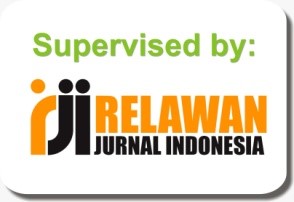The Effect of Executive Characteristics and Financial Constraints on Tax Avoidance:
Manufacturing Listed Companies in Indonesia
Abstract
This study aimed to examine the effect of executive characteristics and financial constraints on tax avoidance. our proxies for Executive characteristics are a corporate risk, and the proxy for the financial constraint is FINCON value using confirmatory analysis of combines these three measures net debt ratio, interest coverage ratio, and dividend payout ratio. The population of this study is manufacturing companies listed on the Indonesia Stock Exchange on the observation period 2016- 2018. The method used is purposive sampling, with a total of samples obtained were 135 manufacturing companies during 2016-2018. The type of data used is secondary data taken from www.idx.co.id. Data analysis was processed using multiple linear regression. The results showed that executive characteristics had a positive and significant effect on the company’s tax avoidance. Financial constraints have a positive and significant effect on the company’s tax avoidance on manufacturing companies listed on the Indonesia Stock Exchange period 2016-2018.
Downloads
References
Anderson, J.C., & Gerbing, D.W. (1988). Structural Equation Modeling in Practice: A Review and Recommended Two-Step Approach. Psychological Bulletin, 103 (3), 411-423.
Arieftiara, D. (2017). Pengaruh Kontinjen Fit antara Strategi Bisnis dengan Ketidakpastian Lingkungan terhadap Pengindaran Pajak. Disertasi Program Studi Ilmu Akuntansi Pascasarjana Fakultas Ekonomi Universitas Indonesia.
Bayuaji, R., & Firmansyah, A. (2016) The Effects of Financial Constraints, Investment Opportunity Set, And Financial Reporting Aggressiveness on Tax Aggressiveness. Journal of Polytechnic of State Finance Stan.
Budiman, G. 2012. Effect of Executive Character Against Tax Avoidance (Tax Avoidance). Journal of Sultan Agung Islamic University.
Chen, S., Chen, X., Cheng, Q., & Shelvin, T. (2010). Are Family Firms More Tax Aggressive than Non-Family Firms? Journal of Financial Economics, 41-61.
Claessens, S., Djankov, S., & Lang, L.H.P. (2000). The Separation of Ownership and Control in East Asian Corporations. Journal of Financial Economics, 58, 81-112.
Claessens, S., Fan, J.P.H., & Lang, L.H.P. (2006). The Benefits and Costs of Group Affiliation: Evidence from East Asia. Emerging Markets Review, 7, 1-26.
Demonier, G.B., Almeida, J.E.F., & Bortolon, P.M. (2015). The Impact of Financial Constraints on Accounting Conservatism. Review of Business Management, 17 (57), 1264-1278.
Dewi, N. N., & Jati, I. K. (2014). Effect of Executive Character, Company Characteristics, and Good Corporate Governance Dimensions on Tax Avoidance on the Indonesia Stock Exchange. Udayana University Accounting E-Journal, 6.2 (2014): 249-260
Dyreng, Scott D., Michelle Hanlon, Edward L. Maydew. 2010. The Effect of Executives On Corporate Tax Avoidance. The Accounting Review, Vol. 85, June 2010, Pp 1163-1189.
Dyreng, S.D., & Markle, K.S. (2016) The Effect of Financial Constraints on Income Shifting by U.S. Multinationals. The Accounting Review, 91 (6), pp. 1601-1627.
Edwards, A., Schwab, C., & Shevlin, T. (2016). Financial Constraints and Cash Tax Savings. The Accounting Review, 91, 859-881.
Fazzari, S.M., Hubbard, R.G., & Petersen, B.C. (1988). Financing Constraints and Corporate Investment. Brookings Papers on Economic Activity, 1 (1988), 141-195.
Frank, M.Z., & Goyal, V.K. (2003). Testing the Pecking Order Theory of Capital Structure. Journal of Financial Economics, 67 (2), 217-248.
Hanlon, M., & Heitzman, 2010, S. Review of Tax Research. Journal of Accounting and Economics, 50, 127-178.
Hutagaol, J. 2007. Taxation: Contemporary Issues. Yogyakarta: Graha Science
Jensen, M.C., & Meckling, W.H. (1976). Theory of the Firm: Managerial Behaviour, Agency Costs and Ownership Structure. Journal of Financial Economics, 3 (4), 305-360.
Kurniasih, T., & Sari, M. R. (2013). Effects of Return on Assets, Leverage, Corporate Governance, Company Size and Fiscal Loss Compensation on Tax Avoidance. Department of Accounting, Faculty of Economics, Udayana University.
Kurt, A.C. (2017). How Do Financial Constraints Relate to Financial Reporting Quality? Evidence from Seasoned Equity Offerings. European Accounting Review, 1-31.
Lim, Yd. (2011). Tax Avoidance, Cost of Debt and Shareholder Activism: Evidence From Korea. Journal of Banking & Finance, 35, 456–470.
Linck, J.S., Netter, J., & Shu, T. (2013). Can Managers Use Discretionary Accruals to Ease Financial Constraints? Evidence from Discretionary Accruals Prior to Investment. The Accounting Review, 88 (6), 2117-2143.
Low, A. (2006). Managerial Risk-Taking Behaviour And Equity-Based Compensation, Fisher College of Business Working Paper, 03-003.
Lewellen, K. (2003). Financing Decisions When Managers Are Risk Averse, Working Paper, Mit Sloan School of Management.
Mills, L. (1998). Book-Tax Differences and Internal Revenue Service Adjustments. Journal of Accounting Research, 36, 343-356.
Rachmawati, N.A., Utama, S., Martani, D., & Wardhani, R. (2019). Determinants of the complementary level of financial and tax aggressiveness: a cross-country study. International Journal of Managerial and Financial Accounting, Vol. 11 (2), 145-166.
Rachmawati, N.A., Utama, S., Martani, D., & Wardhani, R. (2020). Do Country Characteristics Affect the Complementary Level of Financial and Tax Aggressiveness? Asian Academy of Management Journal of Accounting and Finance, Vol. 16 (1), 45–62.
Rauh, J.D. (2006). Investment and Financing Constraints: Evidence from the Funding of Corporate Pension Plans. The Journal of Finance, LXI (1), 33-71.
Schrand, C.M., & Zechman, S.L.C. (2012). Executive Overconfidence and the Slippery Slope to Financial Misreporting. Journal of Accounting and Economics, 53, 311-329.
Shyam-Sunder, L., & Myers, S. (1999). Testing Static Trade-off against Pecking Order Models of Capital Structure. Journal of Financial Economics, 51, 219-244.
Nabilla, S., & Zulfikri, I. (2018). The Influence of Company Risk, Leverage (Debt to Equity Ratio) and Sales Growth Against Tax Avoidance (Empirical Study of Food & Beverage Subsector Manufacturing Companies Registered in Bei 2014-2017). The 4th National Seminar on Scholars of 2018.
Ngadiman & Puspitasari, C. (2014). The Influence of Leverage, Institutional Ownership, and Company Size on Tax Avoidance in Manufacturing Sector Companies Listed on the Indonesia Stock Exchange 2010-2012. Journal of Accounting, Vol. XVIII (03), 408-421.
Oktamawati, M. (2017) Influence of Executive Character, Audit Committee, Company Size, Leverage, Sales Growth, and Profitability Against Tax Avoidance. Journal of Business Accounting, Vol. 15 (1).
Paligorova, T. 2010. Corporate Risk Taking and Ownership Structure. Bank of Canada Working Paper. 2010-3.
Pohan, C. A. (2013). Tax Management; Tax and Business Planning Strategies. Jakarta: Pt Gramedia Pustaka Utama.













